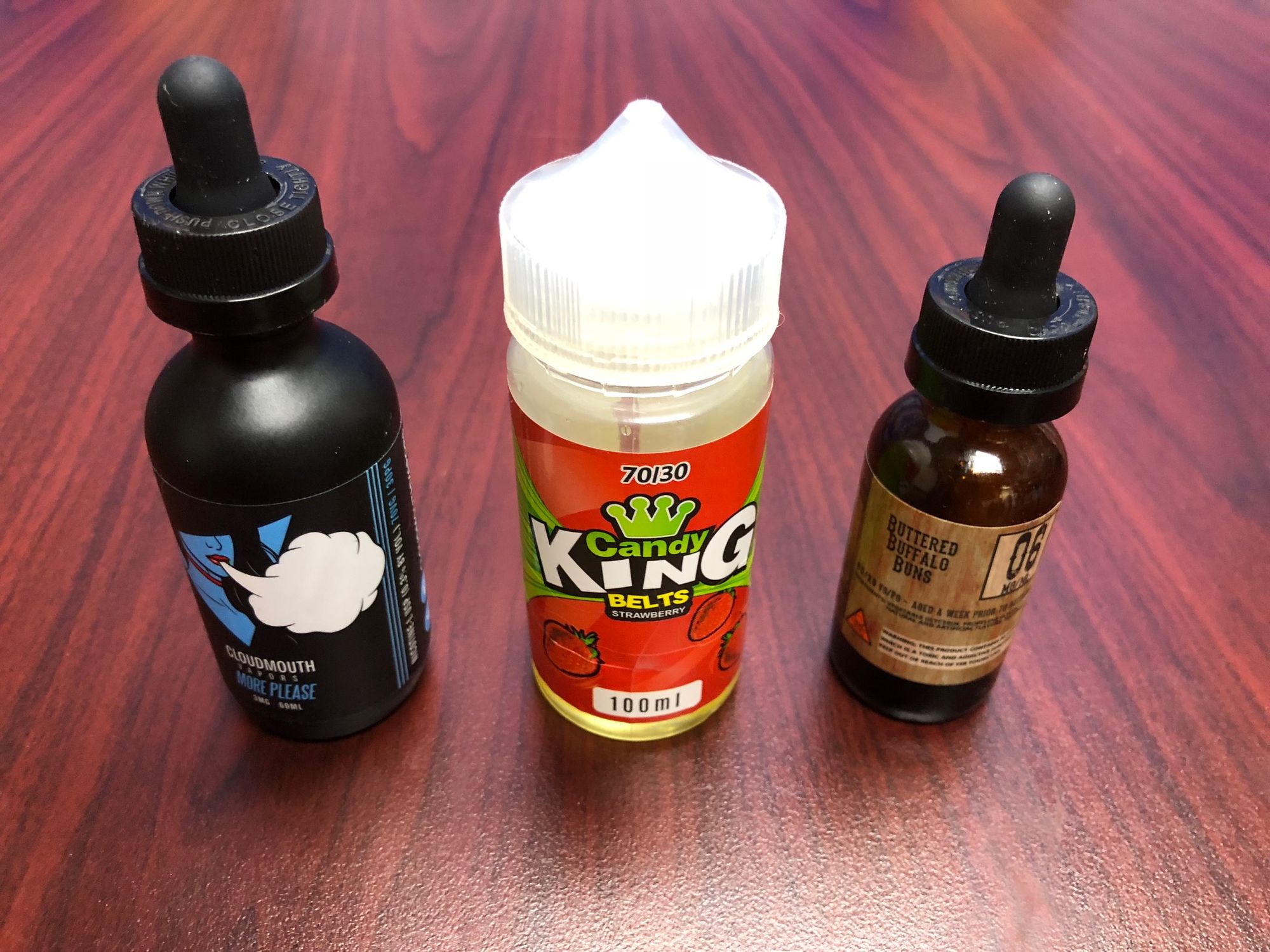A growing body of medical research shows that cigarette smokers and possibly e-cigarette users face a significantly higher risk for serious complications from COVID-19 than non-users.
Medical professionals across the country are also worried that smoking or vaping may increase a person’s chances of getting COVID-19 in the first place, though research on that connection remains anecdotal or incomplete.
The research is strongest on the connection between smoking and COVID-19 in regard to the risk of severe complications, including death.
Doctors and researchers are also increasingly concerned that vaping, using hookahs and smoking marijuana may carry many of the same risks as cigarette smoking when it comes to the coronavirus, an airborne virus that attacks the respiratory system.
The findings are highly relevant in South Dakota, which in 2019 led all neighboring states in the rate of cigarette smoking, with 19.3% of adults currently smoking, according to the American Lung Association. That rate is 18% higher than the national average of 16.4% and more than 25% higher than smoking rates in Nebraska (15.4%) or Minnesota (14.5%).
Youth use of tobacco and vaping products in South Dakota is also a concern for health officials. In 2017, 10.1% of South Dakota high school students reported smoking cigarettes at least once in the past month, while 17.3% of high-schoolers and 2.5% of middle-schoolers reported vaping in the past month.
The American Lung Association in 2020 gave South Dakota “F” grades in four of five measurements it uses to gauge tobacco-control efforts by states and the nation.
Health professionals in South Dakota and across the country are highlighting the dangers of smoking and vaping to inform the public and improve overall public health, but also to send a message that increased health risks amid the pandemic should provide one more reason to quit.
“I think we just need to use our common sense in that smoking and vaping cause inflammation in your lungs, and COVID-19 attacks the lungs, so smoking and vaping are just adding fuel to the fire,” said Darcy Ellefson, a respiratory therapy program specialist at the Sanford Wellness Center in Sioux Falls. “If people are worried about COVID-19 and having infection or getting a severe infection, there’s one thing you can do quickly, and that is you can quit smoking and you can quit vaping.”

"I think we just need to use our common sense in that smoking and vaping cause inflammation in your lungs, and COVID-19 attacks the lungs, so smoking and vaping are just adding fuel to the fire." -- Darcy Ellefson, Sanford Wellness Center
The federal Centers for Disease Control & Prevention lists smoking among a dozen conditions that might put people at greater risk of severe illness from COVID-19.
Reports in the New England Journal of Medicine in April and May found that smokers were 2.4 times more likely to have severe symptoms from COVID-19 and 1.79 times more likely to die than non-smokers. The Nicotine & Tobacco Research group reported in May 2020 that an analysis of 19 peer-reviewed studies indicated that progression of COVID-19 symptoms occurred at nearly twice the rate in smokers compared to non-smokers.
In South Dakota, about 22% of the roughly 9,000 cases of COVID-19 reported as of Aug. 3 were either in smokers or former smokers, according to Joshua Clayton, state epidemiologist. About half of the ongoing chronic conditions reported by COVID-19 patients in South Dakota were related to smoking, Clayton said.
Breaking data down by gender, male COVID-19 patients had a higher rate of smoking or being former smokers (23.7%) than women (16.2%). Among those reporting they are currently smokers, the highest smoking rates were in the age range of 20-29 (12.4%) and the range of 30-39 (12.8%).
A News Watch analysis of COVID-19 case counts across the Great Plains does not appear to indicate a clear connection between the smoking rate and rate of infection from the coronavirus. The review showed that South Dakota has not seen a disproportionate number of cases compared to neighboring states with lower smoking rates.
Still, Clayton said smokers should do their best to quit as soon as possible.
“Being a current or former cigarette smoker may increase your risk of severe illness from COVID-19,” Clayton wrote to News Watch in an email. “If you currently smoke, quit. If you used to smoke, don’t start again and if you’ve never smoked, don’t start.”
Clayton urged people who want help quitting to visit the South Dakota Quitline website at sdquitline.com or to call 1-866-737-8487.
Smoking rate and COVID-19 cases in Great Plains states
This chart shows the percentage of current smokers, the number of COVID-19 cases, population and per-capita rate of COVID-19 cases for South Dakota, its neighboring states and the United States. Case data is from Aug. 8, 2020.
State Smokers CV cases Pop CV rate
SD 19.3% 9,371 885K 1.059
WY 18.7% 3,000 579K 0.518
ND 18.3% 7,508 762K 0.985
MT 17.2% 4,888 1.1M 0.457
IA 17.1% 47,865 3.2M 1.517
NE 15.4% 28,104 1.9M 1.452
MN 14.5% 60,101 5.6M 1.066
US 16.4% 4.95M 328M 1.508
Sources: American Lung Association; U.S. Census; Centers for Disease Control and Prevention. Smoking rates from 2019.
Virus can flourish in inflamed lungs
Smoking cigarettes or marijuana, vaping nicotine or nicotine-free gels, or using a hookah can heighten the dangers associated with COVID-19 in a handful of ways, most tied to the inflammation they all cause in the lungs.
First, smoking or inhaling any chemicals into the lungs can damage or kill the cilia in the lungs that, when healthy, act like brushes to clear away dirt and viruses from sensitive lung tissues, thereby reducing the chance of infection. Damage to cilia can make lungs more susceptible to any virus, including coronavirus.
“I call them brooms in the lungs that are supposed to sweep out dirt and germs we inhale,” Ellefson said. “If those cilia are paralyzed, the germs stay down there, and the longer those things are staying in the lungs, the greater the chance [there is] to hook up and cause problems.”
Smokers also tend to have more phlegm in their lungs, which can grab hold of viruses and increase the chance of infection, Ellefson said.
Cigarette smoking is also linked to other serious health problems, including a host of respiratory illnesses, that are known as co-morbidities to coronavirus, or pre-existing conditions that increase the risk of serious complications from COVID-19.
People who smoke or vape also tend to make many hand-to-mouth movements each day, increasing the chance of introducing the coronavirus into their systems, Ellefson said.
One of the emerging risk factors from nicotine taken by smoking or vaping is an increase in what are known as angiotensin-converting enzyme-2, or ACE2, epithelial cells in the bronchial system. ACE2 enzymes are part of what allows viruses to attach or take hold in the lungs, making smokers and possibly vape users more likely to suffer infection from any virus.
In regard to the SARS CoV-2 virus, the coronavirus now sweeping the planet, one unique feature is that it appears to be much more likely to bind to ACE2 cells than other viruses. That may make smokers and vape users more susceptible to COVID-19 than non-users of nicotine, according to a May 2020 article in the European Respiratory Journal.
The clearest connection at this point is in regard to the increased presence of ACE2 receptors in smokers, noted the article, which included a review of other recent research studies.
“The significance of such over-expression of ACE2 in smokers should not be ignored; COVID-19 and progression of severe pneumonia may be more likely to occur in smokers, particularly those with smoking-related co-morbidities.”
Those co-morbidities are the same for smokers and non-smokers when it comes to a higher risk of complications from COVID-19, including diabetes, chronic obstructive pulmonary disorder and other respiratory illnesses. But growing evidence shows that when combined with smoking and possibly vaping, those co-morbidities are particularly dangerous.
“Cigarette smoke has been identified and linked to increasing expression of the binding site for the cause of the 2020 pandemic, via mediating nicotine receptors,” the May article noted. “With this, an avoidable and potentially gigantic risk-factor has emerged for COVID-19 as the pandemic continues to claim ultimate grasp over the year of 2020.”
The same article notes that the lung inflammation caused by vaping can make users more likely to suffer complications such as pneumonia from COVID-19.
“We found these products toxic to the cells, evident from decreased cellular viability and integrity; more devastatingly, vaping also interfered with cellular energetics,” or the ability of cells to extract oxygen, the study concluded. “As the scientific evidence mounts, confirming the fears of e-cigarettes … strongly associated with the development and progression of debilitating lung diseases, now may be the prime time to include all electronic nicotine delivery systems in the vocalization of concerns concerning tobacco-related death and disease.”
Other data points indirectly to smoking as a potential factor in the initial contraction of COVID-19. In an April 2020 article for the National Institute on Drug Abuse, Dr. Nora Volkow points out that in China, where coronavirus is believed to have originated and where mortality rates from the virus have been much higher among men, 52.9% of men smoke compared with only 2.4% of women.
Volkow also points out that those who abuse any drug, from marijuana to opioids to methamphetamines, may also be at higher risk of COVID-19 complications due to compromised lung function as well as a lack of health care.

Vaping risks still open to debate
While the research on the risks of smoking and COVID-19 is more advanced than in regard to vaping, numerous articles highlight the increased risks of vaping in relation to cardiovascular health, and particularly lung health.
“Our findings reveal that chronic e-cigarette vapor aberrantly alters the physiology of lung epithelial cells and resident immune cells and promotes poor response to infectious challenge,” said a September 2019 report in the Journal of Clinical Investigation.
That article also pointed out that the risks from vaping may be independent of nicotine consumption; meaning that the vape fumes, not the nicotine, could be the cause of immune impairment in vape users.
As a lung doctor who is also a pediatrician and a parent, Dr. Brian Williams said he was disappointed to see e-cigarettes and vaping products marketed as a safe replacement for cigarette smoking, and he remains concerned about the increased risks related to COVID-19.

“When it comes to smoking and vaping, you’re sort of playing a little game of roulette, a game of risk,” said Williams, a doctor and researcher at the University of Wisconsin Center for Tobacco Research and Intervention.
Williams is especially concerned about youth use of e-cigarettes and marketing that he said is aimed at children, including colorful packaging and flavored gels that contain nicotine.
“These devices have also been marketed to children, and these cigarette companies are trying to get a whole new generation of kids addicted to nicotine,” he said.

Williams said he is troubled that tobacco and vaping companies appear to be repeating the history of smoking in America with their approach to vaping. Historically, he said, cigarette smoking was seen as healthful, then as unhealthful, and then became the subject of many public-health campaigns that successfully reduced smoking by informing the public of the risks. Vaping is at the stage now, he said, where promotors are alleging it is a healthful replacement for smoking.
Williams said the emergence of nearly 3,000 cases of what is called Vaping-Associated Lung Illness across the country over the past year, coupled with respiratory problems he has seen in patients who vape, make it clear that vaping carries its own set of risks for lung inflammation and disease.
So far, South Dakota has reported 13 cases of the vape-associated lung disease that can lead to hospitalization or death, according to the state health department. Many of the vape-associated cases across the country involved people with pre-existing respiratory conditions and were also tied to the use of cannabis products introduced into vaping gels.
Williams said evidence from the field suggests that both smoking and vaping can make COVID-19 worse.
“We know that when you vape, you’re inhaling a lot of chemicals, a lot of small particles that can cause inflammation in our lungs,” Williams said in a public-health video posted on the University of Wisconsin website.
“So, the big concern with coronavirus is if you were to get infected and you’ve been vaping or you’ve been smoking, that the risk is that your lungs are already set back prior to the virus infecting them, so there’s concern that you’re going to get more sick if you do get coronavirus.”
Yet he and others in medical research note that any connection between vape use and the likelihood of catching COVID-19 or having serious complications remains only anecdotal because studies have not been done or are incomplete.
“We want to rely on data, and I think right now it’s a little bit more theoretical,” he said. “We know that when you vape, damage is caused to your lungs; we know you’re inhaling toxins and causing inflammation in your lungs and when you get infected with a virus such as Covid, if your lungs are already compromised, the concern is that you’re at risk for disease progression.”
But Zach Burckhard, secretary of the Dakota Vaping Association, which represents vape-product outlets across the state, said the use of vape products remains a safer alternative for adults who want to avoid the known dangers of smoking tobacco.
In an email to News Watch, Burckhard said sellers of vape products in South Dakota “have not reported a disproportionate number of patrons testing positive for coronavirus. Instead, tobacco users across the state seem to be increasingly interested in adopting healthier lifestyles by making the switch to vaping.”
Burckhard said it is not scientifically sound to equate the risk of vape-associated lung illnesses, which are likely caused by adding Vitamin E or THC to vaping gels, with the risk of catching COVID-19.
Burckhard also pointed to reports in the French and Israeli media that seemed to indicate that smoking and nicotine use could serve as a deterrent to COVID-19 in the body.

The vaping industry has taken several steps to keep youth away from vape devices and supports laws restricting youth use. He also said proprietors do their best to keep patrons fully informed about vaping and the latest research on use.
“The Dakota Vaping Association and its member businesses take the virus seriously, recommending the guidelines set forth by the state and CDC be followed,” Burckhard wrote. “The DVA is well aware of the health concerns caused by smoking tobacco, especially given the respiratory nature of COVID-19, which is why we remain committed to our mission of educating South Dakotans about healthier nicotine alternatives in the form of non-combustible electronic cigarettes.”



